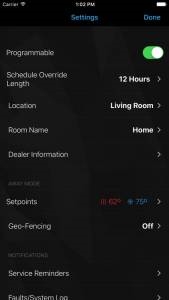What’s Wrong With Smart Home Apps?
What’s Wrong With Smart Home Apps?

Designers underestimate how intuitive a smart home app needs to be to appeal to mainstream users. That’s one of the biggest problems with smart home products. In-house designers want to design something that looks unique and cool. Design consultants are even more motivated to deliver a unique looking design to justify their billable hours. But what’s wrong with smart home apps?
The smart home is not the place for a “proprietary hexagon interface” or other flashy designs. Smart home users simply don’t use those apps long enough to learn how to use an unfamiliar interface.
In that sense, smart home apps are very different from things like gaming or social media.
Take the Slack app, for example. The Slack app is not instantly intuitive. If you were to open it for less than a minute per day, you would have no idea how to navigate between channels, workspaces, and messages. The cumulative hours per week spent communicating with coworkers via Slack gradually teaches users how it all works.
Smart home apps are the opposite of Slack.
When a smart home experience works well, it’s set-it-and-forget-it. You may occasionally need to open the app to manually dim the light or check your smart camera. But ideally, you want to easily be able to control your home while spending very little time in the app.
1. Not designed for the masses.
When I think about potential mainstream users, I think about one of my first boss — a Stanford educated boomer. In one of his many interactions with technology, he ran into my office late one night appalled that an email he’d been writing for over an hour had disappeared, and his assistant had long gone home for the day.
It turned out that he had accidentally minimized his email client. He called it “magic” when I simply re-opened it. There’s no way my former boss could figure out how to pair a light with the Philips Hue app.
He certainly wouldn’t be able to use the thousands of smart home apps that are much less intuitive.
Yet he’s precisely the type of homeowner who could afford to upgrade to a smart home and would benefit from the convenience. While we talk a lot about user research in the tech, few product designers spend enough time with people of different ages and backgrounds to understand how they use technology.
Most millennials have, at some point had to show a parent or grandparent how to use Facebook before the addictive experience of looking at photos of family members hooked that older generation.
But there’s a giant chasm between the early smart home adopters and getting this technology to the majority. That chasm will only be crossed with better usability.
2. Originally designed for installers.
Another common trend in smart home apps is that they often incorporate experiences that were designed for professional installers of home appliances. Smart thermostats are frequent offenders in this area, as HVAC systems are typically installed by professionals.
Take this thermostat app:

While you can probably guess that the up and down arrows allow you to adjust the humidity, the colors and icons make the rest of the interface quite difficult to understand. It also uses confusing jargon like “hum,” “dehum,” “setpoints,” and “faults.”
The fact that the Location and Room Name are swapped suggests that the interface was even too confusing for whoever was tasked with preparing screenshots for the App Store.
3. One app to rule them all.
Early adopters often say that the biggest need in smart homes is one app to control all their devices.
There are a lot of ecosystems today that try to be the smart home hub like Smartthings, Apple Homekit, and the various voice speakers. But the reason those have not entirely taken off is that users often still need to set up each device with its primary app before authenticating their account to the ecosystem.
All those required steps make it a power user experience.
Google Assistant is trying to solve this problem with Seamless setup, and Alexa will likely do the same. But the voice actions and skills are unlikely to cover all the use cases buyers expect to get out of their smart home devices, so it’s only part of the solution.
If you can get the onboarding right, the simplest experience for a first time smart home user is to download the app listed on the box that the device came in — and quickly be able to control the device without unnecessary configuration.
Users certainly shouldn’t have to wait for confirmation emails that never arrive.
Eventually, there will be a simple UX for all the devices in a home that mainstream users can navigate, but we’re quite far from that today.
The post What’s Wrong With Smart Home Apps? appeared first on ReadWrite.
(42)

